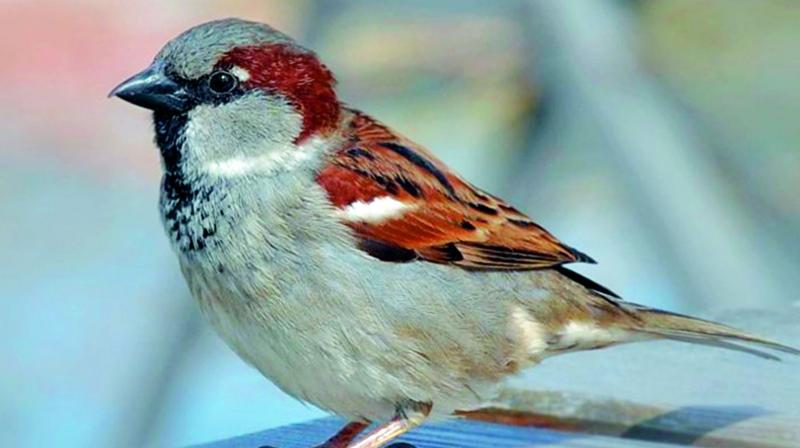Rajahmundry: ONGC sets up nests to protect sparrows
Senior students to be trained to make bird nests.

Rajahmundry: As the house sparrow is vanishing fast due to urbanisation, it now finds a place in the IUCN Red List as a threatened species.
Taking a step towards rectifying this, ONGC has set up sparrow nests developed scientifically with an international design and placed at its school Kendriya Vidyalaya and also at its residential quarter complex in a bid to conserve and protect the bird.
The ONGC authorities have set up as many as 30 wooden sparrow nest boxes. The sparrow nests are fixed to the walls at an elevated place strategically located to ensure that the birds are not troubled by predators. All the nests are geo-tagged so that they can be monitored by an international club working for conservation, protection and promotion of house sparrow and can also give requisite suggestions to promote the species.
As the sparrow feeds on grains and small insects, it can find food on its own and take shelter in the nest to brood and breed. The opening of the nest is such that it can only accommodate a sparrow, with no other bird able to stake a claim on it. As the breeding season for sparrows starts in January and lasts up to June, the authorities are expecting the sparrows to nestle in and start breeding.
ONGC deputy general manager (HR) N. Anand said, “We have set up 30 sparrow nests on our premises a few days ago as part of our efforts to protect and conserve the house sparrow and also promote its breeding in a big way. We are expecting the sparrows to occupy nests for shelter in a few days and live in it during their lifetime.”
Meanwhile, a Rajahmundry-based NGO dealing with animals Jeeva Raksha Animal Welfare Society is planning to install as many as 1,000 house sparrow nests mainly in gated communities and other residential areas by motivating the general public and making them aware on the importance of conservation and protection of house sparrows.
Animal welfare activists are also being advised to develop nests with low-cost and safe material so that they can be given away to interested people to install them at their houses and provide protection to them.
Grain stations are also being developed with mixed grains filled into one or two litre capacity capped soft drink bottles with small holes punctured in the caps and positioned upside down so that the sparrows can collect grains from the hole and consume them.
NGO head and animal rights activist Mr P.B.K. Acharyulu said, “If the people give their consent to install sparrow nests at their houses, we will install them and we expect this will help the city to see the presence of a large number of sparrows once again.”

